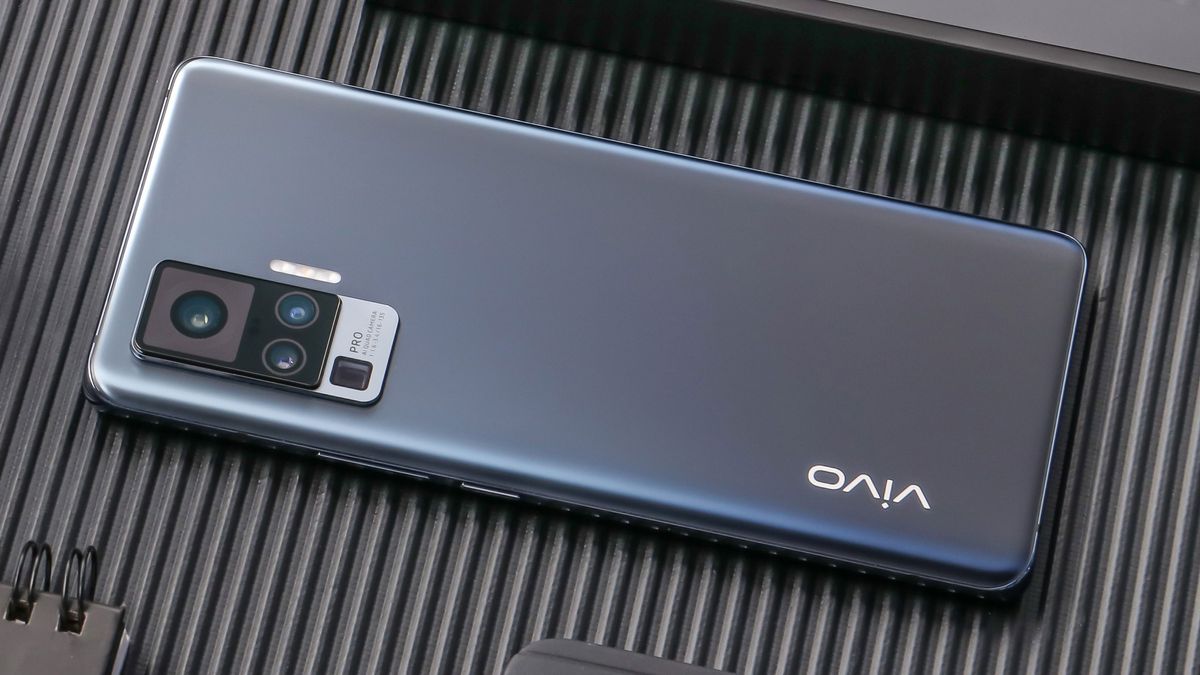Vivo X50 is the world's thinnest 5G phone, with cameras to challenge Samsung
It comes with a built-in camera gimbal

Update: we've received more information on the specs of each of the new Vivo X50 series handsets and have added the details to our original story.
The Vivo X50 series of flagship smartphones have been officially launched in China, boasting powerful specs and the title of the world's thinnest 5G phone.
Consisting of a trio of new phones - the Vivo X50, X50 Pro and X50 Pro Plus - the focus is very much on the photography experience. They all have four rear cameras, but they're all slightly different.
There are a range of camera modes including Super Night, Astro, Super Wide-Angle and Super Macro, plus a 60x Hyper Zoom similar to the zoom capabilities of the Huawei P40 Pro (50x), Samsung Galaxy S20 (30x) and Galaxy S20 Plus (30x).
- What is 5G? Our full explainer about the next-gen internet tech
- The best 5G phones right now
- What we know so far about the Google Pixel 5
This is taken a step further on the X50 Pro (but not the X50 Pro Plus) as it features a 'gimbal camera system' on its main camera.
Vivo says "modelled after a full-size professional gimbal, X50 Pro's built-in gimbal module moves in the opposite direction of shaking motions, providing increased stability for the main camera.
"This system also widens the rotation angle and anti-shake area compared to popular stabilization methods, resulting in super clear images."
Get daily insight, inspiration and deals in your inbox
Sign up for breaking news, reviews, opinion, top tech deals, and more.
It sounds similar to OIS (optical image stabilization) we've seen on many smartphone previously, but we'll need to wait for more information on the system before we're able to comment on it fully.






The world's thinnest 5G phone
Vivo may well be talking up the cameras on its new X50 series, but it's also packed in another feature into a seriously slim form factor.
According to the Chinese manufacturer, the Vivo X50 is the thinnest 5G phone around, measuring just 7.49mm thick. To compare that with other 5G handsets, the Huawei P40 Pro is 9mm, the OnePlus 8 Pro is 8.5mm and the Galaxy S20 is 7.9mm thick.
The X50 Pro Plus packs the best power with Qualcomm's X55 5G modem and top-tier Snapdragon 865 chipset under the hood for flagship performance. You still get 5G connectivity with the X50 and X50 Pro, but they have less power as they instead come with the Snapdragon 765G chipset.
Other features of the X50 series include support for HDR10+ and screen refresh rates of 90Hz on the X50 and X50 Pro, and 120Hz on the X50 Pro Plus, plus there's a frosted glass finish on the rear.
| Header Cell - Column 0 | X50 | X50 Pro | X50 Pro+ |
|---|---|---|---|
| Dimensions (mm) | 159.54 x 75.39 x 7.49 | 158.46 x 72.8 x 8.04mm | TBC |
| Weight | 173g | 181.5g | TBC |
| Screen size (inches) | 6.56 | 6.56 | 6.56 |
| Screen resolution | 2376 x 1080 | 2376 x 1080 | TBC |
| Screen refresh rate | 90Hz | 90Hz | 120Hz |
| Chipset | Snapdragon 765G | Snapdragon 765G | Snapdragon 865 |
| RAM | 8GB | 8GB | 8GB / 12GB |
| Storage | 128GB / 256GB | 128GB / 256GB | 128GB / 256GB |
| Rear cameras | 48MP + 13MP + 8MP + 5MP | 48MP + 13MP + 8MP + 8MP | 50MP + 32MP + 13MP + 13MP |
| Front camera | 32MP | 32MP | TBC |
| Battery | 4200mAh | 4315mAh | 4350mAh |
While Vivo's mobile range hasn't spread too much outside of China, the smartphone manufacturer has confirmed that these will be "the first X series products that will be made available to international markets."
The Vivo X50 release date in China is June 2020, with a price starting at 3498 Yuan (around $500, £400, AU$700) for the entry-level model, but we're still waiting on the release date and price for other markets.
We'll update this article when we hear more, but for now Vivo told us "the X50 series will be available gradually in international markets in the second half of this year."

TechRadar's former Global Managing Editor, John has been a technology journalist for more than a decade, and over the years has built up a vast knowledge of the tech industry. He’s interviewed CEOs from some of the world’s biggest tech firms, visited their HQs, and appeared on live TV and radio, including Sky News, BBC News, BBC World News, Al Jazeera, LBC, and BBC Radio 4.
Most Popular


